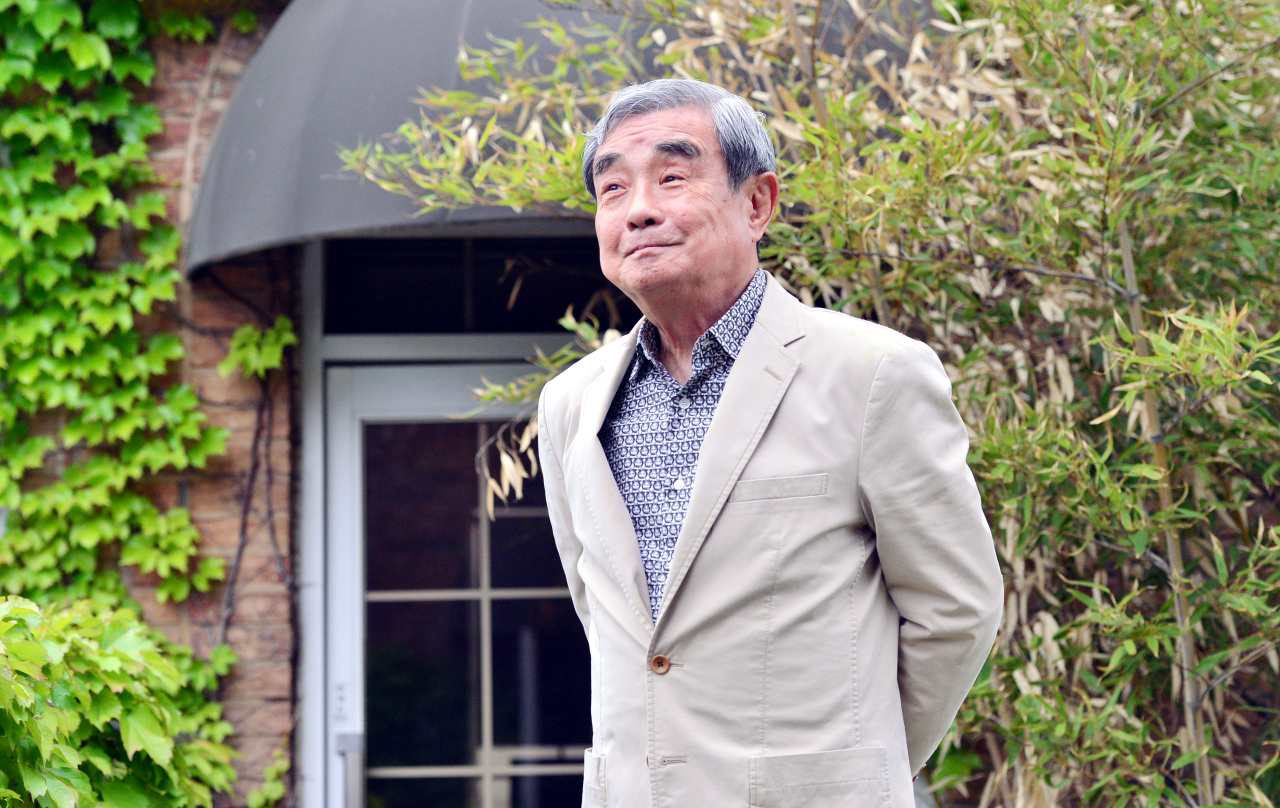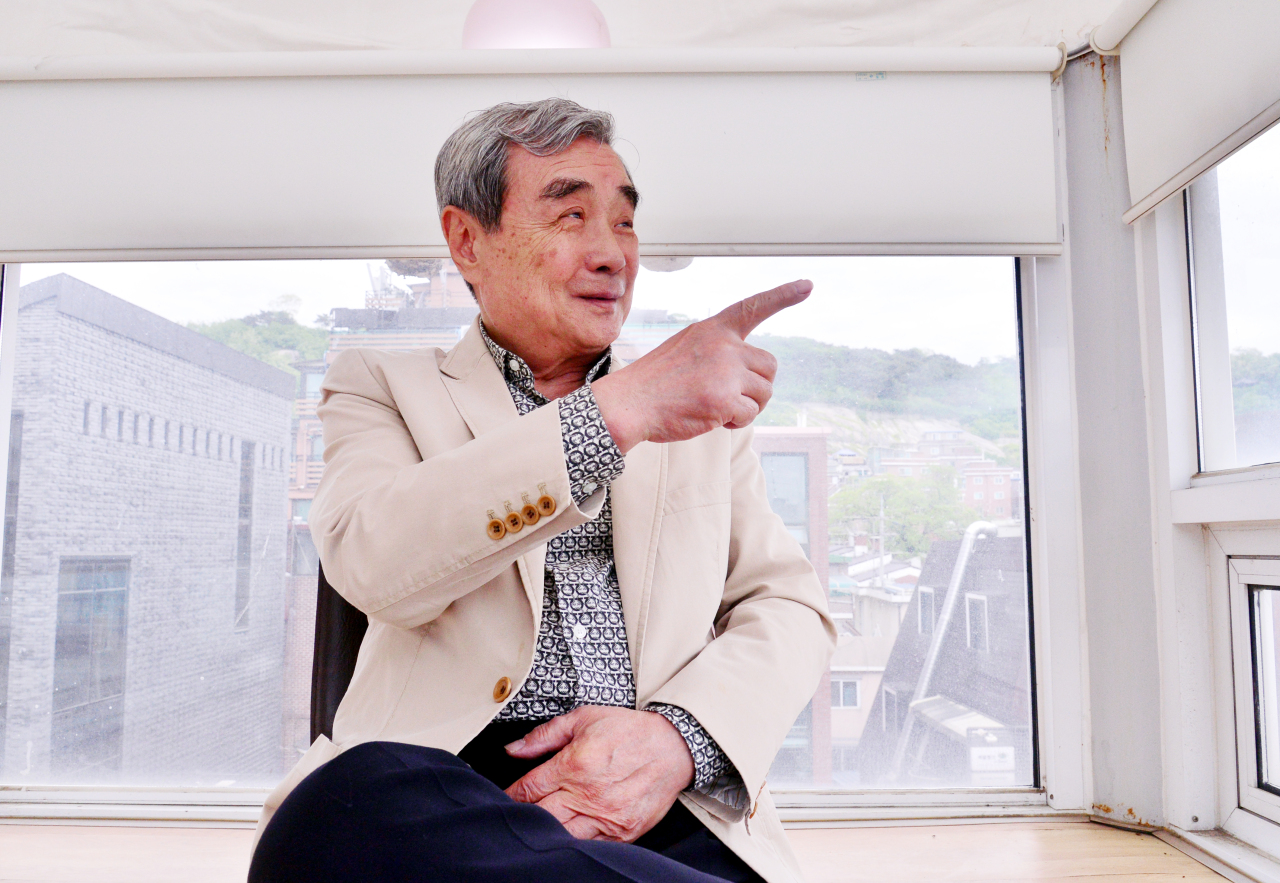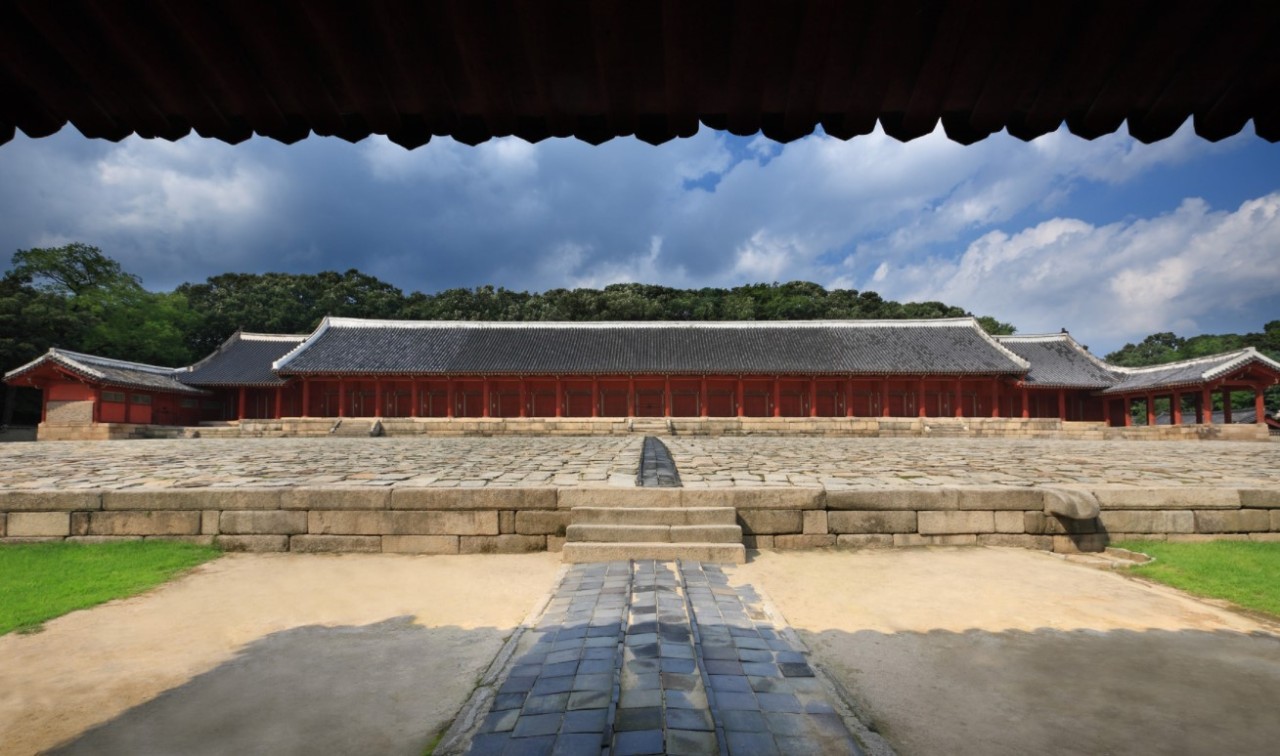[#WeFace] [Herald Interview] Architect Kim Won’s goal is buildings that conform to nature
Published : 2021-06-05 16:01:03

Although the prevailing notion is that architecture is about art, the environment has always been at the heart of architect Kim Won’s designs.
Kim, 78, pursues environment-friendly values when designing buildings, paying homage to nature and to traditional Korean values.
“The concept of environment-friendly tends to be used indiscriminately. But my value lies in conforming to nature. We should make the most of nature, and it is foolish to ignore such a gift. But many architects are neglecting this fact, focusing too much on design,” Kim said during an interview with The Korea Herald on May 10 at Kwangjang, the architectural research office in central Seoul that Kim has run since 1976.
“Nature is a huge privilege given to humans. If I exaggerate, it’s almost a sin for architects to ignore it as professionals. It’s much easier and more beneficial to use nature than to rely on their own talent,” he said.
Kim, 78, pursues environment-friendly values when designing buildings, paying homage to nature and to traditional Korean values.
“The concept of environment-friendly tends to be used indiscriminately. But my value lies in conforming to nature. We should make the most of nature, and it is foolish to ignore such a gift. But many architects are neglecting this fact, focusing too much on design,” Kim said during an interview with The Korea Herald on May 10 at Kwangjang, the architectural research office in central Seoul that Kim has run since 1976.
“Nature is a huge privilege given to humans. If I exaggerate, it’s almost a sin for architects to ignore it as professionals. It’s much easier and more beneficial to use nature than to rely on their own talent,” he said.

Born in 1943 in Seoul, Kim has designed numerous structures that embody respect for nature -- the National Theater for Traditional Performing Arts, the Convent of St. Paul de Chartres Seoul Province and the National Institute for Unification Education.
Before the Independence Hall of Korea was built in 1987 in Cheonan, South Chungcheong Province, Kim helped the government find the right site. Now he leads a citizens’ committee in charge of the Gwanghwamun Square construction plan.
Throughout his 50-year career, Kim has been an environmental advocate, fighting against the reckless development that started in the country in the 1960s. Kim and other like-minded architects issued an environmental statement in 2007 to heighten awareness of environmental issues in the field.
“The lofty philosophy we used to hold, that we should live complying with nature, disappeared during the reckless development that began in the early 1960s along with our own traditional architectural beauty seen in hanok,” he said.
South Korea’s architectural history was cut off while the country pursued accelerated economic growth. This period had a huge impact on Korea’s architecture, even more so than the Japanese colonial era, degrading the overall quality of residential life, according to Kim.
One example is the uniform apartment complexes, “which dominate the whole country, from Seoul to Jeju Island,” Kim said. Not only do they create environmental pollution in the form of fine dust and carbon dioxide, apartment life makes people passive and mindless of others.
“To put it simply, if you see garbage in front of your apartment, you may just call the apartment management office and ask them to take care of it. The residential environment shapes people’s minds and the social culture of the country,” he said.
When it comes to hanok, its beauty comes from how Koreans’ ancestors wanted to live with nature. Hanok does not shut out nature but values interaction with nature, allowing in some cold air in the winter and heat in the summertime.
“Ondol was created to heat the floor in hanok in winter, which is quite an environment-friendly system. While the floor is warm, the upper air is cool as cold air comes in. The circulation leaves the head cool while the feet stay warm, which is really healthy for humans,” he added.
Before the Independence Hall of Korea was built in 1987 in Cheonan, South Chungcheong Province, Kim helped the government find the right site. Now he leads a citizens’ committee in charge of the Gwanghwamun Square construction plan.
Throughout his 50-year career, Kim has been an environmental advocate, fighting against the reckless development that started in the country in the 1960s. Kim and other like-minded architects issued an environmental statement in 2007 to heighten awareness of environmental issues in the field.
“The lofty philosophy we used to hold, that we should live complying with nature, disappeared during the reckless development that began in the early 1960s along with our own traditional architectural beauty seen in hanok,” he said.
South Korea’s architectural history was cut off while the country pursued accelerated economic growth. This period had a huge impact on Korea’s architecture, even more so than the Japanese colonial era, degrading the overall quality of residential life, according to Kim.
One example is the uniform apartment complexes, “which dominate the whole country, from Seoul to Jeju Island,” Kim said. Not only do they create environmental pollution in the form of fine dust and carbon dioxide, apartment life makes people passive and mindless of others.
“To put it simply, if you see garbage in front of your apartment, you may just call the apartment management office and ask them to take care of it. The residential environment shapes people’s minds and the social culture of the country,” he said.
When it comes to hanok, its beauty comes from how Koreans’ ancestors wanted to live with nature. Hanok does not shut out nature but values interaction with nature, allowing in some cold air in the winter and heat in the summertime.
“Ondol was created to heat the floor in hanok in winter, which is quite an environment-friendly system. While the floor is warm, the upper air is cool as cold air comes in. The circulation leaves the head cool while the feet stay warm, which is really healthy for humans,” he added.

For Kim, Jongmyo is one of the most beautiful architectural works in Korea -- the longest in the country, measuring 109 meters. The royal shrine houses the spirit tablets of 19 kings and queens from the Joseon era (1392-1910). It was originally built during the reign of King Taejo with space for four ancestral tablets, but was expanded three times and now has 19 spaces.
Kim took globally renowned Canadian American architect Frank Gehry to the shrine in 1994 when Gehry visited at the invitation of Samsung. He was astonished by its magnificence and revisited the place in 2012 with his family, Kim said.
“Jongmyo does not bother to impress people. Its beauty does not come from its design but from its naturalness and its conformity with nature,” Kim said.
By Park Yuna (yunapark@heraldcorp.com)
Kim took globally renowned Canadian American architect Frank Gehry to the shrine in 1994 when Gehry visited at the invitation of Samsung. He was astonished by its magnificence and revisited the place in 2012 with his family, Kim said.
“Jongmyo does not bother to impress people. Its beauty does not come from its design but from its naturalness and its conformity with nature,” Kim said.
By Park Yuna (yunapark@heraldcorp.com)
http://www.koreaherald.com/common/newsprint.php?ud=20210603001092